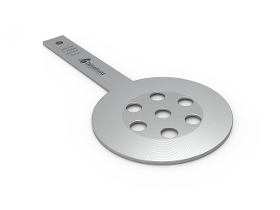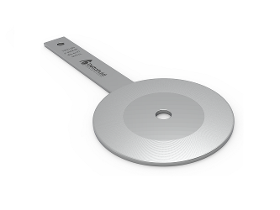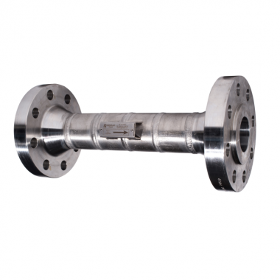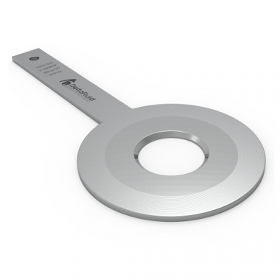- europages
- >
- COMPANIES - SUPPLIERS - SERVICE PROVIDERS
- >
- restriction orifice plates
Results for
Restriction orifice plates - Import export

DELTAFLUID
France
Orifices: dimensioned according to the fluid, the pressure drop or the flow to be achieved going through the restriction. Plate thickness: calculated taking into account the pressure drop generated by the plate and the diameter of the pipework in order to avoid a deformation of the plate. For more details, see our Frequently Asked Questions. Noise: the number of orifices is determined according to the level of noise not to be exceeded. The maximum noise level depends on the operating conditions: limited to 85 dB(A) by the regulatory body for an average daily exposure in continuous operation. Intermittent or emergency operation - acceptable upper values (see corresponding regulations). If the noise level is still too high, it is possible to switch to a multi-stage restriction orifice. Cavitation: the cavitation level is checked for each plate and the orifices are calculated to avoid cavitation. For more information on cavitation, see our Frequently Asked Questions.
Request for a quote
DELTAFLUID
France
Orifice diameter: dimensioned according to the fluid, to the pressure drop to be achieved and to the flow going through the restriction. Plate thickness: calculated taking into account the pressure drop generated by the plate and the diameter of the pipework to prevent plate deformation. See more details in our Frequently Asked Questions. Noise: control of the estimated noise level at 1 m. In case of high noise level, refer to the multi-hole plate. Cavitation: The cavitation level is checked for each plate. In the presence of cavitation, a multi-stage restriction orifice alternative may be proposed depending on the operating conditions of the restriction. For more information on cavitation, see our Frequently Asked Questions. Critical flow or choked flow: if the fluid reaches its maximum speed when passing the restriction, its flow can not increase. A multistage solution can be proposed depending on the operating conditions of the restriction. For more information on critical flow
Request for a quote
DELTAFLUID
France
The function of a restriction orifice is to limit a flow rate or to reduce a pressure in a pipe. It is calibrated according to the technical specifications of the installation so as to reach the desired pressure or flow rate; according to the values to be achieved, either simple restriction orifices (single-hole or multi-hole) or multi-stage restriction orifices can be proposed. It advantageously replaces a simple valve: simpler, more economical, more robust and maintenance free.
Request for a quote
DELTAFLUID
France
Orifice plates or diaphragms are the most commonly used primary elements for differential pressure flow measurement. They allow measurement over a wide range of flow rates and for a wide range of pipe diameters. There are several types: the sharp-edge orifice plate, the best known, the other concentric plates with conical inlet and quarter circle plate for the measurement of low flows or viscous fluids and the eccentric plate or segmental plate for the measuring dirty or impure fluids. Finally, the multi-hole / conditioning orifice plate allows a measure of quality while providing a minimum footprint. Inserted within a circular pipe, they create an obstacle, increase the speed of the fluid and generate a pressure difference between upstream and downstream of the restriction. This differential pressure measurement is proprotional to the flow rate value.
Request for a quoteDo you sell or make similar products?
Sign up to europages and have your products listed
Results for
Restriction orifice plates - Import exportNumber of results
4 ProductsCountries
Company type